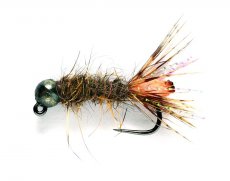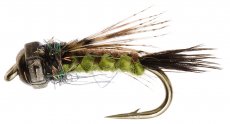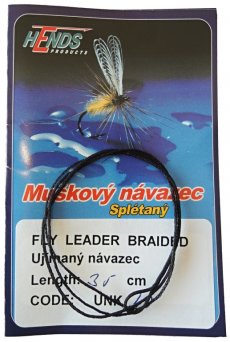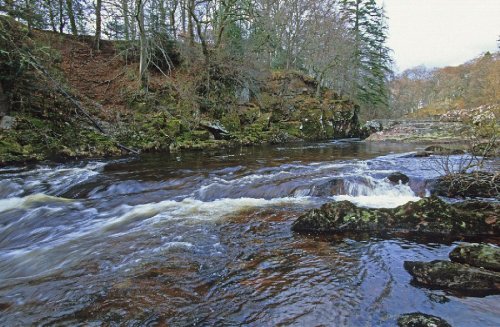In river fishing, there have been several fairly consequential changes in recent years in Scotland...
In river fishing, there have been several fairly consequential changes in recent years in Scotland. Many of these trends are associated with the introduction of new items of tackle; others are developed based on fishing tactics from overseas. For example, when river trout fishing the use of gold-beaded flies has brought into play a new concept of fly-fishing, where the artificial fly is presented to the fish just above the stones on the bottom of the river.
Central Europe has gifted Scottish fly-fishing another innovative variation in fly-pattern design: the woven nymph. Using materials which can be wrapped into a weave, and weighting with lead wire within the dressing to make them sink rapidly, small imitative artificials were developed in Czechoslovakia and Poland and these have been used in the UK, and Scotland in particular, with devastating effect. By roll-casting a single woven nymph using a very short line, the angler fishes at depths in pools which otherwise would be very difficult to attain. Grayling and trout, and the occasional salmon, will take these small offerings when conventional approaches would mostly fail.
Fly patterns designed by Roman Moser, originally developed for the fast-flowing glacial streams of the Austrian Alps, are used by Scottish anglers fishing for trout and grayling. Using gold-plated brass beads, or even the heavier, more expensive tungsten beads in the dressing, these imitative flies - designed to represent the crawling stages of river caddis fly larvae - are very successful. Known as 'Peeping Tom' patterns - because they imitate the natural caddis larva's outer case of sticks, particles of sand and small stones, with the head of the caddis grub poking out at the front - they are extremely effective when fishing for trout or grayling near the river bed.
A further apparently minor change is the introduction of the use of 'polyleader' or 'braided leader' extensions to fly lines. By using different sink-rated leaders at the end of floating lines, fly-fishing becomes a much more versatile pursuit. The short sections of sinking line offer the angler the opportunity to fish the fly at any chosen depth, without necessarily having to change the maim part of his line each time to attain the required length. By simply replacing the leader tip by 'loop-to-loop' connection, lines are adjusted to fish at any chosen depth with excellent effect.
Science and education has also changed many of the ways in which river anglers fish. It is now commonplace to hear anglers talk at length about aquatic ecology. Previously, many anglers had a limited knowledge of insect species; some were able to recognise the major families of insects that hatched from the pools in front of them; others were able to vaguely identify flies in a broader context, using their popular names such as 'olives' or 'March Browns'. Today anglers now have access to huge banks of knowledge from superb entomology books and ecology programmes on television, to magazine articles and websites on the Internet. Anglers are able to use this new found awareness to their advantage. Many have moved into new fields of imitative fly-fishing. For example, anglers are now aware that a trout's diet consists of chironomid insects - a fact that was not truly taken into account in the past when tying and selecting artificial flies. This is a welcome and refreshing trend, one that should make anglers even more aware of the aquatic environment around them.

















